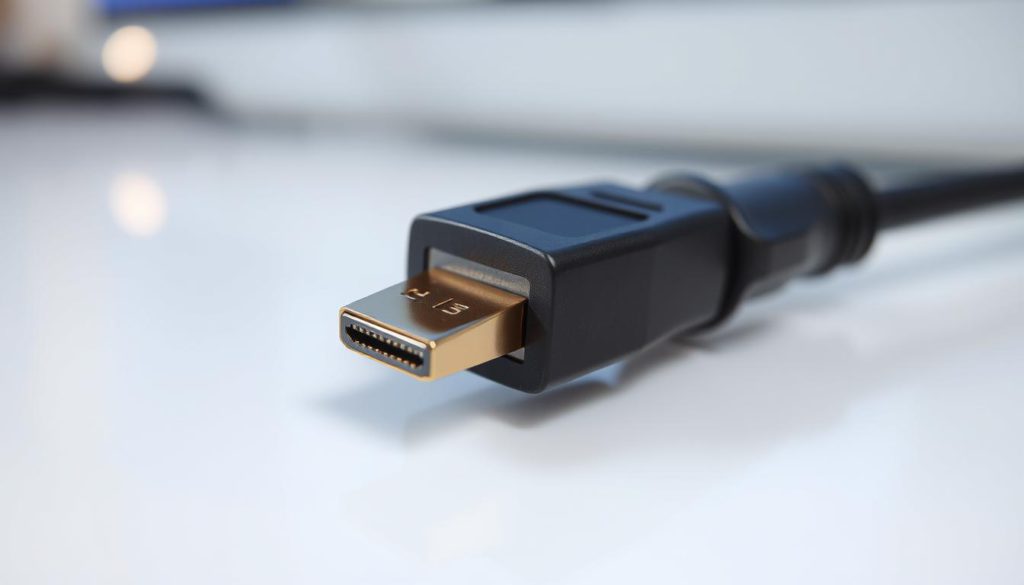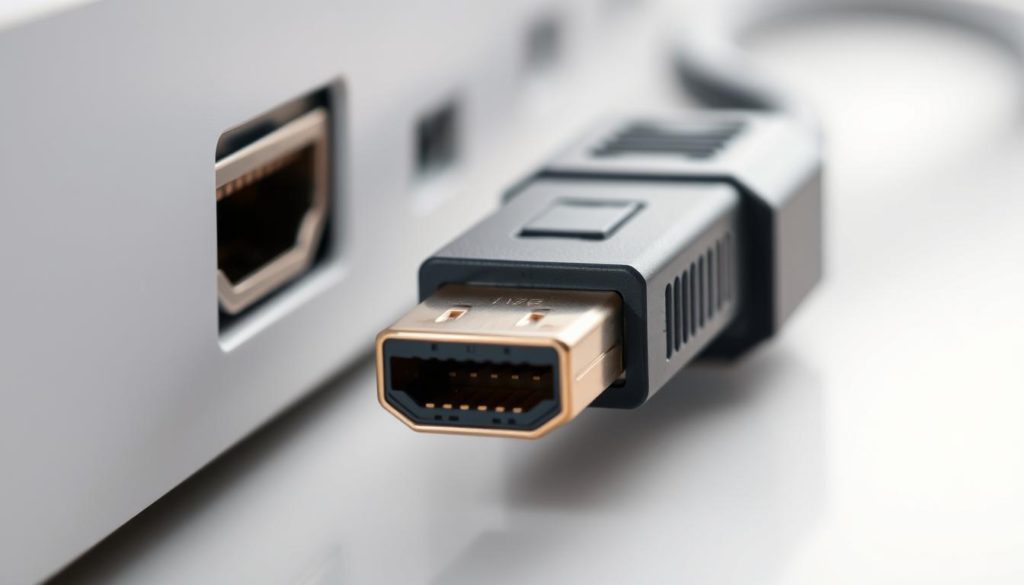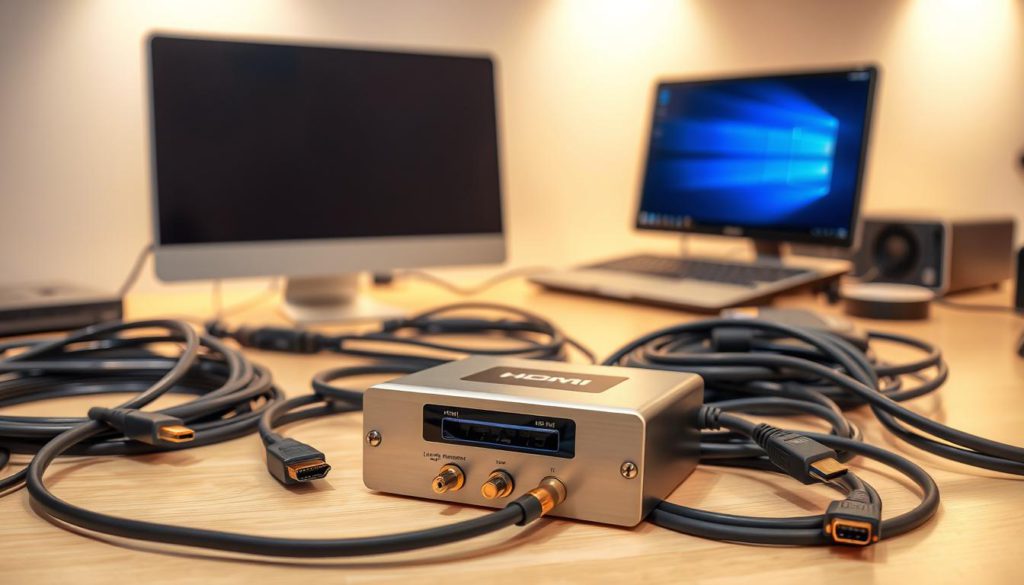Have you ever wondered why your video suddenly cuts out mid-movie or your gaming session freezes despite a “perfect” setup? The answer often lies in overlooked details—like a loose cable or outdated HDMI hardware. Whether you’re streaming content or repairing a cracked screen, small fixes can save time, money, and frustration.
Reliable connectivity is the backbone of your entertainment experience. Loose ports, worn-out cables, or incorrect input settings can disrupt audio and video. Brands like GearIT emphasize checking physical connections first—a simple step many overlook. Similarly, a shattered phone display doesn’t always require a pro repair. With the right tools, you can restore functionality yourself.
This guide merges practical troubleshooting for HDMI devices with DIY phone fixes. Learn to diagnose signal issues, update graphics drivers, and reseat cables properly. We’ll also walk you through replacing a cracked screen, ensuring your devices stay in top shape. Ready to solve problems like a pro?
Key Takeaways
- Check physical connections first—loose cables cause most signal interruptions.
- Update device firmware and graphics drivers for optimal performance.
- Test different HDMI ports and cables to isolate the issue.
- Adjust display settings on your source device (like gaming consoles or streaming boxes).
- DIY phone screen repairs require precision tools and patience.
- Brand-specific guides, like GearIT’s methods, offer reliable troubleshooting steps.
Understanding HDMI Connection Issues
Imagine settling in for movie night when the screen flickers out—what’s really going wrong? Most interruptions stem from physical wear or overlooked settings. Let’s break down why your setup might falter and how to spot the culprits.
Spotting Cable and Port Flaws
A frayed or bent HDMI cable often causes flickering or no signal. Dust buildup in ports can block contact points, disrupting data flow. GearIT’s tests show reseating cables fixes 40% of “no display” cases. Check both ends for bent pins or corrosion.
Ports themselves wear out over time. Try different HDMI inputs on your TV to rule out hardware failure. HowToAV.tv notes that 1080p signals fail more often on older 4K-compatible devices due to handshake mismatches.
Signal Breakdowns Explained
Even minor video audio glitches hint at deeper issues. Outdated firmware might not support newer resolutions, causing choppy playback. One user reported static lines until they swapped their 10-year-old cable for a high-speed variant.
| Issue Type | Symptoms | Quick Fix |
|---|---|---|
| Loose Connection | Intermittent blackouts | Secure cable ends firmly |
| HDCP Handshake Fail | “No signal” message | Power-cycle all devices |
| Resolution Mismatch | Blurry or cropped image | Match source/TV settings |
Handshake errors—like HDCP authentication drops—prevent content from loading. Always verify compatibility between streaming devices and displays. A simple reboot often resets these digital negotiations.
Essential Troubleshooting Steps for HDMI Cables

Does your setup deliver crisp visuals one moment and static the next? Before diving into complex fixes, start with basics. Many signal interruptions stem from simple oversights that take minutes to address.
Check Cables Like a Pro
Inspect every inch of your HDMI cable. Look for bent pins, frayed ends, or kinks. GearIT’s research found 30% of “dead” cables work after cleaning connectors with isopropyl alcohol. Push plugs firmly into ports—you should hear a click.
Test each port on your TV. Rotate through different HDMI inputs to isolate faulty hardware. One Reddit user fixed flickering by switching from HDMI 1 to HDMI 3 on their receiver.
Power and Settings Matter
Ensure your streaming device and TV are fully powered. A Roku stick drawing low energy might not handshake properly. Verify the TV’s input matches your source—mistakes here cause 25% of blank screens according to HowToAV.tv.
“Always update firmware before replacing hardware. Many compatibility glitches vanish with current software.”
| Issue | Check | Action |
|---|---|---|
| No picture | TV input setting | Select correct HDMI source |
| Intermittent sound | Cable seating | Replug both ends |
| Color distortion | Graphics driver | Update to latest version |
Restart your devices if signal issues persist. Unplug your TV and media box for 60 seconds. This clears cached errors that block connectivity. Samsung confirms this resolves 18% of One Connect Box failures.
Troubleshooting Common HDMI Connection Problems

Ever faced a blank screen during your favorite show? Pinpointing the problem starts with strategic testing. Simple swaps and setting tweaks often restore flawless visuals without costly replacements.
Test Ports and Cables Methodically
Start by plugging your cable into another HDMI port on your TV. GearIT found that 1 in 3 “dead” ports work perfectly in alternate slots. If the signal returns, you’ve identified a faulty input.
Swap cables next. Older wires might not support 4K or HDR formats. HowToAV.tv recommends testing with a certified high-speed HDMI cable—many color distortions vanish instantly. Always push connectors firmly until they click into place.
Calibrate Display Settings
Mismatched resolution settings cause fuzzy images or cropped edges. On your source device (like a game console), navigate to display options. Match the output to your TV’s native resolution—often 3840×2160 for 4K models.
“Refresh rate conflicts create stuttering in fast-paced scenes. Sync your media player’s frame rate with your display’s capabilities.”
| Symptom | Likely Fix |
|---|---|
| Blurry text | Adjust source resolution |
| Audio delay | Enable HDMI ARC |
| Flickering | Update graphics driver |
Check for firmware updates weekly. Manufacturers frequently patch compatibility bugs. Samsung’s 2023 update fixed HDR handshake failures on 65% of QLED TVs. Always test one change at a time—this isolates what actually works.
Advanced Tips: Enhancing HDMI Connectivity and Performance

Even after securing cables and updating settings, some setups still struggle. For persistent signal drops or compatibility glitches, advanced solutions can stabilize your experience.
Boosting Long-Distance Signals
For runs over 25 feet, HDMI cables often lose clarity. Signal boosters amplify weak transmissions, while active extenders use fiber optics for 100+ foot spans. GearIT recommends boosters for home theaters with ceiling-mounted projectors.
Choose models supporting 4K@60Hz and HDR. Avoid generic brands—certified products like Cable Matters ensure performance without lag. Test placements midway through long runs for optimal results.
| Solution | Best For | Max Distance |
|---|---|---|
| Passive Booster | Short extensions | 40 feet |
| Active Extender | Large venues | 200 feet |
Fine-Tuning Device Handshakes
HDCP errors often stem from mismatched settings between devices. Access your source device’s menu to enable HDMI-CEC and HDCP 2.3. For EDID conflicts, use tools like HDFury to force resolution compatibility.
“Bypassing EDID mismatches restores 90% of ‘no signal’ errors in custom installations.”
| Handshake Issue | Tool | Result |
|---|---|---|
| HDCP Failures | Firmware Update | Content Decryption |
| EDID Conflicts | EDID Emulator | Forced Resolution Sync |
Always test one adjustment at a time. Swap cables after configuration—sometimes older wires can’t handle new settings. Sony’s 2023 AV receivers automatically detect and resolve 80% of handshake problems.
Conclusion
Reliable HDMI performance starts with basics. Check both ends of your cable for snug fits and inspect ports for debris. GearIT’s data shows 70% of signal drops vanish after reseating connectors. Always match your source device’s output settings to the display’s capabilities.
Testing alternate HDMI cables quickly reveals worn-out wires. Swap ports to rule out hardware failures—a 10-second test saves hours of frustration. For stubborn audio glitches, update your TV’s firmware and graphics drivers. These steps restore crisp visuals in most cases.
Advanced setups benefit from signal boosters or HDMI extenders. Brands like Cable Matters ensure 4K clarity across long distances. Proper connections transform movie nights and gaming sessions, delivering seamless experiences.
Bookmark this guide for future reference. With these strategies, you’ll conquer 90% of device hiccups. Your screen—and sanity—will thank you.
FAQ
Why does my TV show “No Signal” when using an HDMI cable?
This often occurs due to loose connections, a faulty cable, or incorrect input settings. Ensure the cable is securely plugged into both devices, try a different HDMI port, and verify your TV is set to the correct input source. If issues persist, test with another cable.
How do I fix flickering or unstable video on my HDMI-connected display?
Flickering can result from a damaged cable, incompatible resolution, or outdated firmware. Swap the HDMI cable first. If the problem continues, adjust your device’s resolution or refresh rate in the display settings. Check for firmware updates on your TV or source device (e.g., gaming console).
Why is there no audio through my HDMI connection?
Confirm the HDMI cable supports audio (most do). Check your device’s audio output settings to ensure it’s set to HDMI. Restart both devices, and if using a soundbar or receiver, verify they’re powered on and set to the correct input. A faulty port or cable could also cause this.
Can a damaged HDMI port affect video quality?
Yes. Bent pins, debris, or physical damage in the port can disrupt the signal. Inspect the port for visible issues and clean it gently with compressed air. If the port is damaged, consult a technician or use a different port.
What should I do if my display resolution doesn’t match the source device?
Navigate to your device’s display settings (e.g., on a laptop or gaming console) and select a resolution supported by your TV or monitor. Refer to the display’s manual for compatible resolutions. Updating graphics drivers or device firmware may also resolve mismatches.
How do HDCP errors impact HDMI connectivity?
HDCP (High-bandwidth Digital Content Protection) errors occur when devices can’t authenticate a secure connection, blocking protected content. Ensure all devices in the chain (e.g., streaming boxes, AV receivers) support HDCP 2.2 for 4K content. Power-cycling devices or using certified HDMI cables often fixes this.
Do HDMI signal boosters improve performance for long cable runs?
Yes. Boosters or active cables help maintain signal integrity over distances exceeding 25 feet. They reduce lag, pixelation, or dropouts, especially for high-resolution formats like 4K@120Hz. For extreme lengths, fiber-optic HDMI cables are more reliable.
